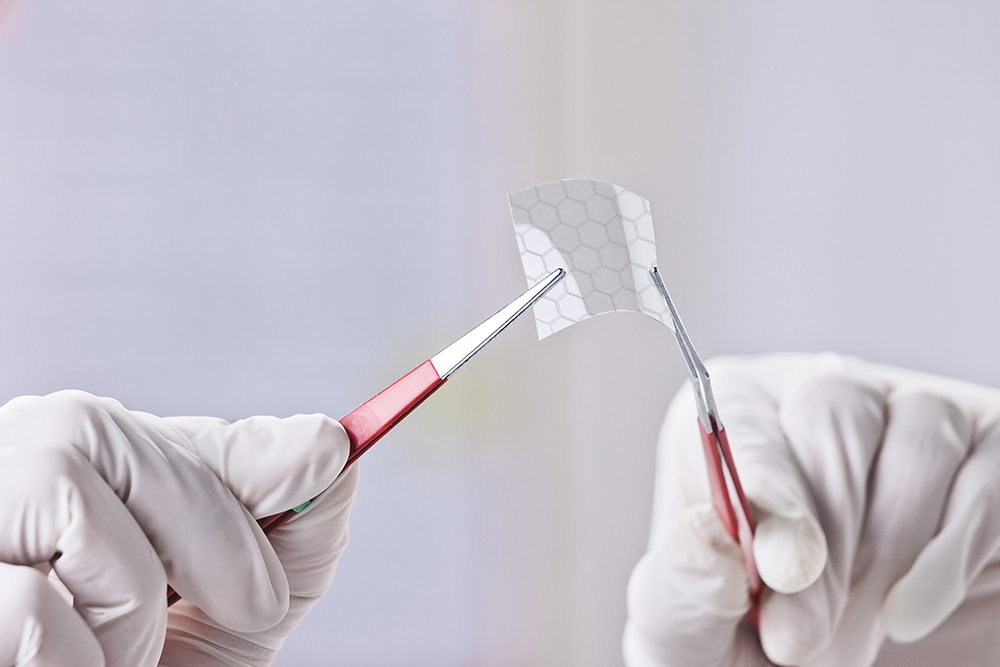- Research
-
YOU ARE
- Community member
- Future Student
- Student
- Professor
- Alumni
- Media
- Guidance counsellors
- INRS retiree
- Contact Us
- Newsroom
- Careers
- FR
-
Studies
We teach the next generation of researchers to develop scientific, social, and technological innovations.
-
Research
We find solutions through interdisciplinary research and industry or public and community partnerships.
-
INRS
We play an active role in Québec's economic, social, and cultural development.
A team of researchers from Canada and Italy recently published a paper in Nature Materials journal that could usher in a revolutionary development in materials science, leading to big changes in the way companies create modern electronics.
Professor Federico Rosei
The goal was to develop two-dimensional materials, which are a single atomic layer thick, with added functionality to extend the revolutionary developments in materials science that started with the discovery of graphene in 2004.
In total, 19 authors worked on this paper from INRS, McGill, Lakehead, and Consiglio Nazionale delle Ricerche, the national research council in Italy.
This work represents an exciting development in the realization of functional two-dimensional materials beyond graphene,” said Mark Gallagher, a Physics professor at Lakehead University.
“I found it particularly rewarding to participate in this collaboration, which allowed us to combine our expertise in organic chemistry, condensed matter physics, and materials science to achieve our goals.”
Dmytro Perepichka, a professor and chair of Chemistry at McGill University, said they have been working on this research for a long time.
“Structurally reconfigurable two-dimensional conjugated polymerscan give a new breadth to applications of two-dimensional materials in electronics,” Perepichka said.
“We started dreaming of them more than 15 years ago. It’s only through this four-way collaboration, across the country and between the continents, that this dream has become the reality.”
Federico Rosei, a professor at the Énergie Matériaux Télécommunications Research Centre of the Institut National de la Recherche Scientifique (INRS) in Varennes who holds the Canada Research Chair in Nanostructured Materials since 2016, said the research team was excited about the results of this collaboration.
“These results provide new insights into mechanisms of surface reactions at a fundamental level and simultaneously yield a novel material with outstanding properties, whose existence had only been predicted theoretically until now,” Rosei said.
This work opens exciting new directions, both theoretical and experimental. The integration of this system into a device (e.g. transistors) may lead to outstanding performances. In addition, these results will foster more studies on a wide range of two-dimensional conjugated polymers with different lattice symmetries, thereby gaining further insights into the structure vs. properties of these systems.
The Italian/Canadian team demonstrated the synthesis of large-scale two-dimensional conjugated polymers, also thoroughly characterizing their electronic properties. They achieved success by combining the complementary expertise of organic chemists and surface scientists.
This research was partially supported by individual Discovery Grants from the Natural Sciences and Engineering Research Council of Canada (NSERC), a team grant from the Fonds de recherche du Québec – Nature et technologies (FRQNT), by the US Army Research Office Single Investigator Grant, and a project Grande Rilevanza Italy-Quebec of the Italian Ministero degli Affari Esteri e della Cooperazione Internazionale (MAECI), Direzione Generale per la Promozione del Sistema Paese. Professor Rosei is also grateful to the Canada Research Chairs program for funding and partial salary support.
Other articles you might be interested in
You may also like
Share






